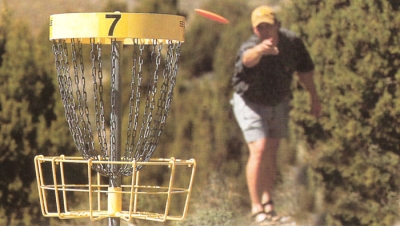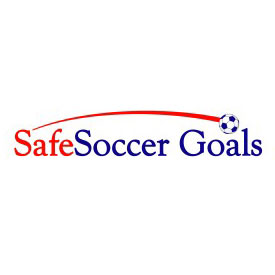 The most well-known member in the world of softball, Jennie Finch has served as a role model for young women throughout the world not only for her on-field performance and sportsmanship but how she conducts herself off of it. A Gold Medal pitcher from the 2004 Olympic team, Jennie was a 3 time All-American and Player of the Year winner while playing in college for the Arizona Wildcats. She spends a lot of time teaching clinics to young girls, and working with the Cal Ripken Sr. Organization and The National Child Safety Education Program. Jennie is also a board member of ‘nPlay Foundation working with other professional athletes to fight the childhood obesity epidemic in America.
The most well-known member in the world of softball, Jennie Finch has served as a role model for young women throughout the world not only for her on-field performance and sportsmanship but how she conducts herself off of it. A Gold Medal pitcher from the 2004 Olympic team, Jennie was a 3 time All-American and Player of the Year winner while playing in college for the Arizona Wildcats. She spends a lot of time teaching clinics to young girls, and working with the Cal Ripken Sr. Organization and The National Child Safety Education Program. Jennie is also a board member of ‘nPlay Foundation working with other professional athletes to fight the childhood obesity epidemic in America.
PM - Your Jennie Finch Softball Camps have been instructing girls from the 3rd grade and older to Practice like a Champion, Play like a Champion and Live like a Champion! What does it take to instill these goals in the girls?
JF - I want these girls to dream big and believe in themselves above all! The kids I get to see and meet ultimately have to set their own goals and want their own success, I’m just there to help them with the mechanics and encourage them along the way!
PM - What valuable lessons did you learn from playing team sports as a child?
JF - So many I can’t count them! Teamwork, cooperation, hard work, optimism, mental toughness...the list goes on and on.
PM - How do these lessons carry over into your adult life?
JF - The same basic lessons I learned on the field - how to work with others, how to live in the moment, how to work hard - apply every day for me. I’m glad I had a chance to learn them as I grew up.
PM - How do you feel about the practice of giving all players trophies who participate in a competition? Does this help their self-esteem or hurt it?
JF - I’m not sure there’s a definite answer to this. I’d imagine it depends on the individual child and how old they are and lots of different factors. Even at the professional level athletes are motivated by different things! The most important thing is recognizing the positive for each child and encouraging them to follow their dreams.
PM - Your 2004 Olympics gold medal win as well as being a professional softball player have brought you much attention. You have chosen to promote softball for young girls and be a good role model for them. Was that a difficult decision? What makes a good role model for young girls?
JF - I’ve been so blessed to play this game and to represent my country. There was no greater feeling for me than playing with the USA across my chest. It had been my dream for so long. I feel it’s a gift to be able to share a little bit of that with so many young girls. There’s so much negativity out there, and I have a chance to be a positive light. I’m grateful for that opportunity!

PM - What is your take on the traveling youth sports teams that have emerged in the last few years?
JF - I’m the mom of a little boy who plays travel baseball. It’s different these days, no doubt, but I think any opportunity for kids to play is a good one. It’s great when there’s a team and opportunity to play that matches a child’s interest and intensity.
PM - What advice do you give young people who aspire to be professional athletes?
JF - I tell them to work hard, believe in themselves, and give it everything they have. That’s how they will reach their goals.
PM - Obviously, not all kids are gifted athletes. How do you encourage children regardless of their abilities to be active?
JF - There’s something for everyone, whether it’s running, jumping on a trampoline, playing tag. Whatever it is, it feels good to move your body every day. We have to get out there and be active ourselves to set an example!
PM - Many playground manufacturers have recently been developing outdoor fitness equipment for children’s playgrounds. What do you think of this trend? Do you think it will help our children become more physically fit?
JF - Exercise and activity help kids learn better and be healthier, so if outdoor fitness equipment helps that, then I’m all for it.
PM - You are obviously concerned with the epidemic childhood obesity problem in America with your involvement with ‘nPlay Foundation. How is ‘nPlay tackling this issue?
JF - The primary focus of ‘nPlay is helping schools integrate physical activity and nutrition education in the core subjects for K-8 graders. Children form habits between those ages, and getting healthy activities into their daily lives through their classes will provide them with the foundation for a healthy lifestyle that can last for the rest of their lives.
PM - Are you encouraged about our children’s future? What success stories keep you motivated to continue working with young people?
JF - We all have problems throughout our lives. Sports taught me that there will always be obstacles; of course we’ll get knocked down, but it’s how you pick yourself up that matters. Kids today are as bright and resilient as ever. I have faith that they are the problem solvers of the future! It’s a blessing to spend time with them and see their energy and enthusiasm.
PM - Do you have a favorite play memory from your childhood you would like to share? How did you play as a child?
JF - I loved playing with my big brothers! And my dad spent lots of time coaching and catching for me. Those are my favorite memories - time spent with family!





















Add new comment